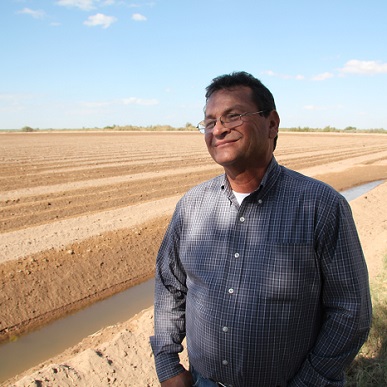An emotional journey: Residents see Colorado River for first time
I saw the Colorado River for the very first time this week. So did this boy, who grew up in San Luis Rio Colorado – a city named after the river – but he has only ever known hot, dry sand to be where today there is cool, clear water.
I could imagine his moment of discovery. All of a sudden, there is a river to splash and play in where there was none before. He might be thinking why, from where, how come?
The answers lie within decades of hard work and cooperation on the part of U.S. and Mexican policymakers, water agencies and conservation groups – including EDF. These various stakeholders brokered an agreement to begin restoring the Colorado River Delta with a pulse of water to replicate, on a much smaller scale, the natural spring snowmelt that used to inundate the region before the era of dams and diversions. The years of work it took to produce that agreement, known as Minute 319, is a story in itself. But really, it’s just the beginning.
The rest of the story is being written as we speak – as the pulse flow, or “flujo pulso,” is making its way toward the sea.

Cottonwood and willow trees planted by restoration workers at Laguna Grande are being nourished by water from the pulse flow. The hope is that these trees will develop into a previously lost riparian forest. Several bird species, including many endangered species, are expected to return to this place. Some already have.

Irrigation managers on both sides of the river are quickly working to assure local farmers that the pulse flow is not taking any water away from their deliveries. Some farmers are skeptical, but most people can see the value of returning water to the river. And everyone, especially the farmers, can agree that more cooperation between the U.S. and Mexico is a good thing.
Tomorrow, the Cucapa tribe (Cucapa meaning “river people”) will host a river celebration to honor a culture, history and identity based on the Colorado River. With fishing as a primary source of food and income, the Cucapa know more than anyone the value of a healthy river. The elder Cucapa Colin Soto wrote, “El pueblo Cucapa es el rio. Toda nuestra vida esta basado en el rio.” – The Cucapa people are the river. Our whole life is based on the river.
Just like the boy seeing the river for the first time, these people have questions. Will the trees survive after the pulse flow is over? Will farmers see any benefit? Will fishing opportunities improve? Only time will tell what happens, and we need to make sure that all of these answers are available.
The science team monitoring the pulse flow will have some of the answers. The rest of the answers will come from the people – from those who remember the Colorado River as it once was, flowing naturally to the Sea of Cortez, to those who are seeing the Colorado River for the first time. Their firsthand accounts are essential parts of the pulse flow story.
Thank goodness I am not alone in my pursuit to ensure that this story is one of many and diverse perspectives. For only once we have a complete frame of reference can we chart a better course for the future.










